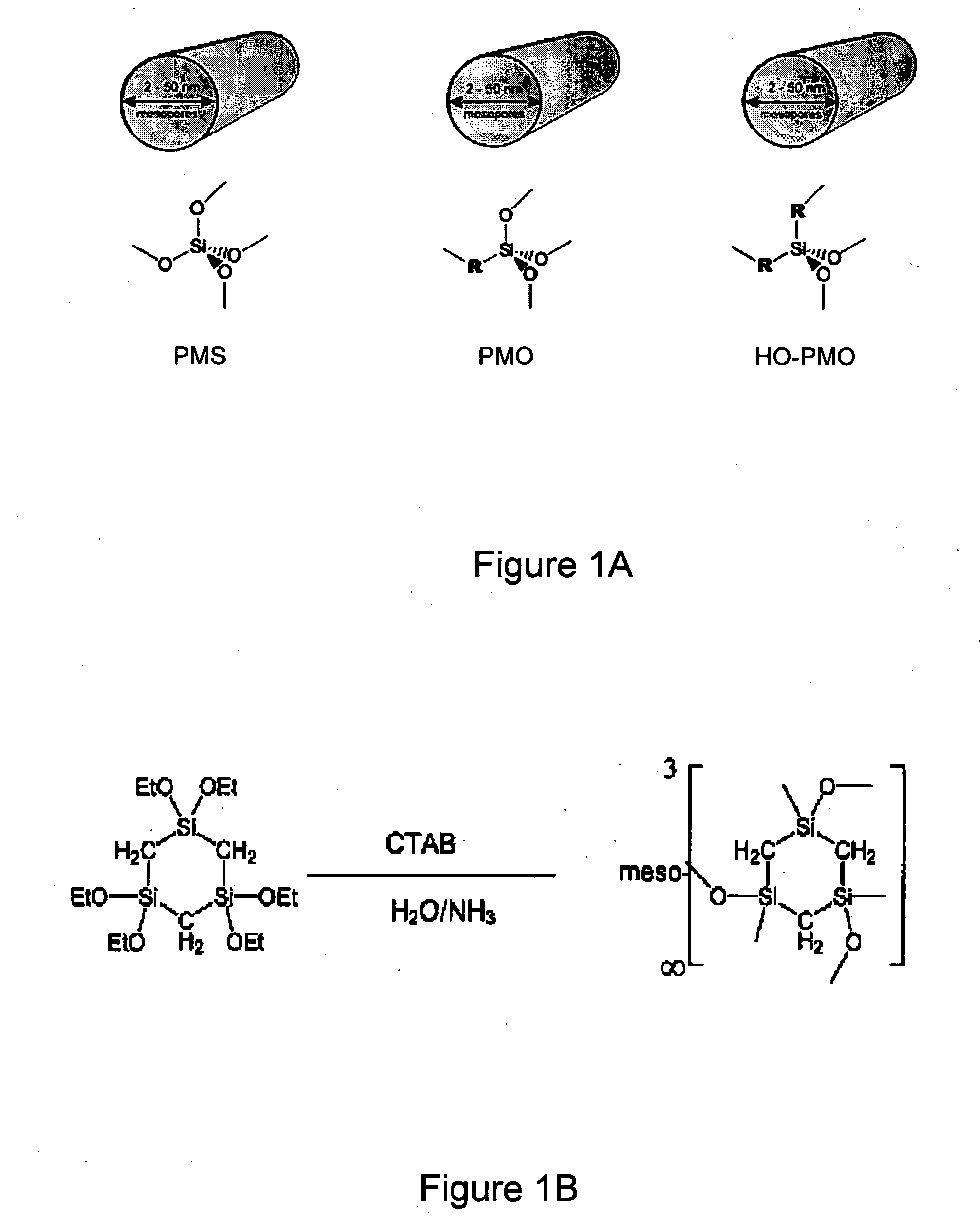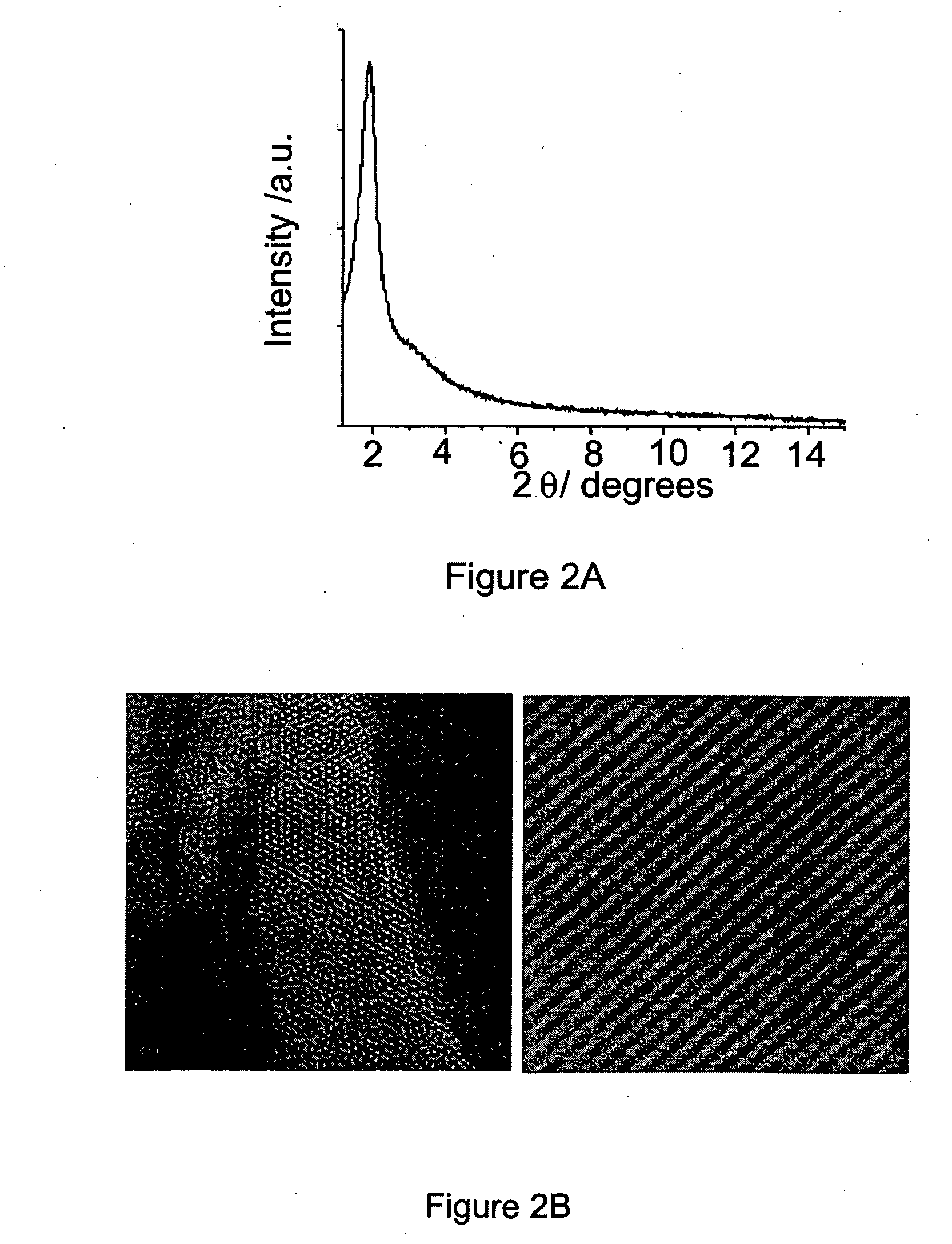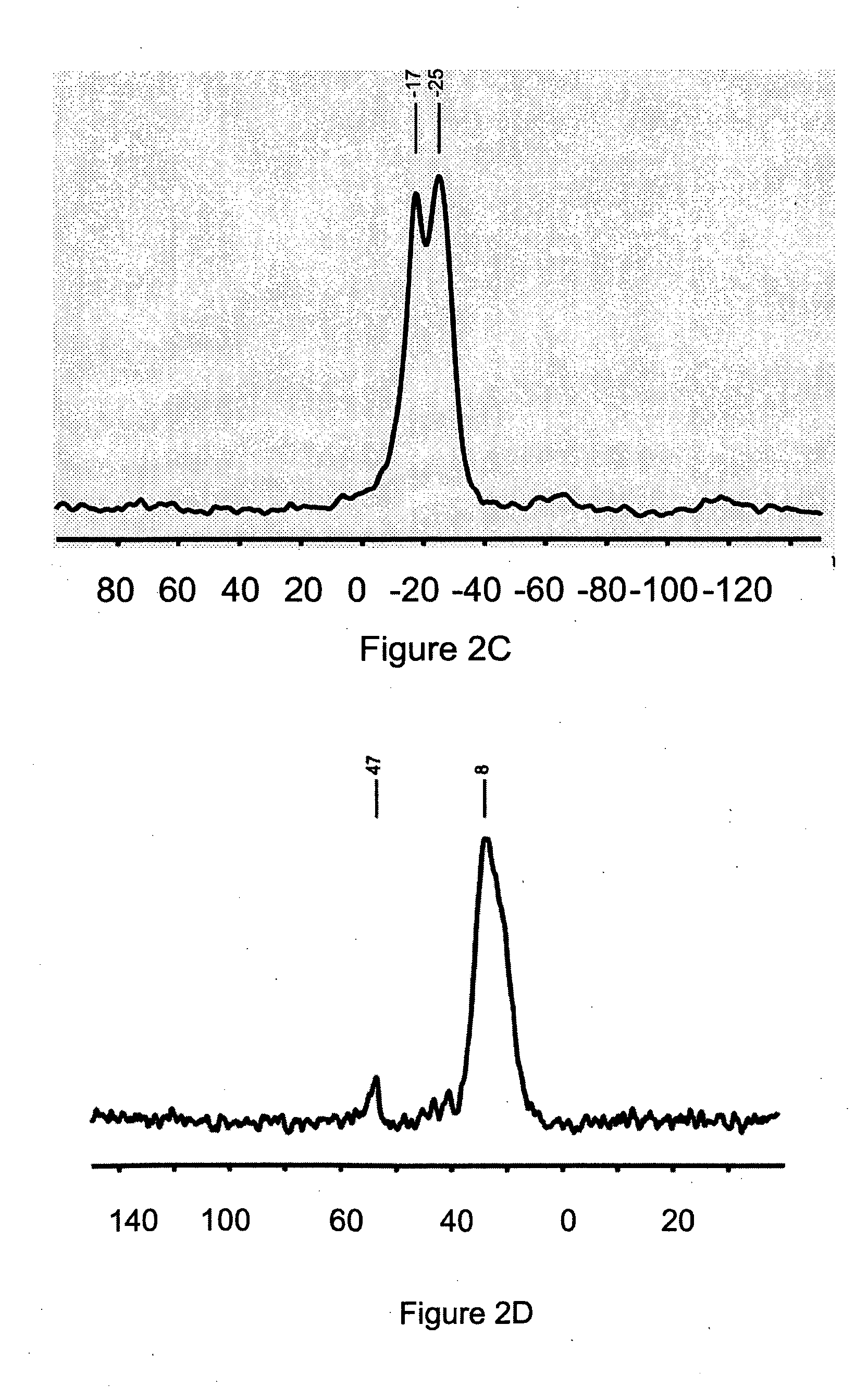High organic group content-periodic mesoporous organosilicas (HO-PMO's)
a mesoporous organosilica, high organic group technology, applied in the direction of organic compounds/hydrides/coordination complex catalysts, organic-compounds/hydrides/coordination complexes catalysts, molecular-sieve silica-polymorphs, etc., can solve the problem of limiting the number of chsub>3 /sub>groups that can be incorporated, and the k value of meso-silica is very
- Summary
- Abstract
- Description
- Claims
- Application Information
AI Technical Summary
Benefits of technology
Problems solved by technology
Method used
Image
Examples
example 1
Synthesis of a HO-PMO as a Powder with the Approximate Composition SiOCH2
[0073] The synthesis of [SiCH2(OEt)2]3 was performed according to literature as disclosed in D. J. Brondani, R. J. P. Corriu, S. El Ayoubi, J. E. Moreau, M. W. C. Man, Tetrahedron Letters 34, 2111 (1993).
[0074] Synthesis of a high organic group content periodic mesoporous organosilica with an approximate composition of SiOCH2 was as follows. Cetyltrimethylammoniumbromide (0.9 mmol, 0.32 g, Aldrich) was dissolved in a mixture of 2.16 g NH4OH (35 wt %) and 3.96 g de-ionized water at 20° C. [(EtO)2SiCH2]3 (1.26 mmol, 0.5 g) were added to this solution, which was stirred for 24 h at 20° C. while a white precipitate formed. Afterwards the mixture was aged for 24 h at 80° C. The precipitate was filtered off and washed with copious amounts of water. The as-synthesized sample was then stirred for 48 h in a solution of 12 g HCl (36 wt %) and 80 g of methanol. The sample was then filtered off again and washed with copi...
example 2
Synthesis of a HO-PMO as a Film with the Approximate Composition SiOCH2
[0082] Films were made by spin-coating a synthesis solution at rates of 1200 to 3600 rpm onto glass or a Si (100) wafer. A typical synthesis would involve mixing 0.356 g of 10−3M HCl, 0.568 g EtOH, and 0.450 g aqueous cetyltrimethylammonium chloride solution (25 wt. %, Aldrich) to make a homogeneous solution, then adding 0.488 g of [(EtO)2SiCH2]3 (molar ratio 1.0:31.3:2.89×10−4:10:0.285 of [(EtO)2SiCH2]3:H2O:HCl:EtOH:cetyltrimethylammonium chloride). After spin-coating the films were dried in air at room temperature for 24 h and washed in DI H2O before calcination at 300° C.-500° C. under flowing nitrogen for 5 h, using a heating rate of 1° C. / min. The films were 500-1000 nm thick, optically-clear, crack-free, and with root mean square (RMS) surface roughness of ˜1.2 nm measured by atomic force microscopy (AFM).
example 3
HO-PMO Films with Various Organic Content with Si3(CH2)3 Rings and SiO4 Tetrahedra as Building Units.
[0083] Films of different organic content were made by mixing relative amounts of the silica precursor tetramethylorthosilicate (TMOS, 98% Aldrich) and [(EtO)2SiCH2]3 with molar ratios n (TMOS): {n (TMOS)+n ([(EtO)2SiCH2]3)}=0, 0.143, 0.333, 0.600 and 1 corresponding to the molar fraction f of the constituting Si sites f=D:(D+Q)=0, 0.25, 0.5, 0.75 and 1. The synthesis conditions of example 2 were employed.
Characterization of the High Organic Group Content Periodic Mesoporous Organosilica of Example 2 and 3
[0084] The PMOs that were obtained as a supported oriented film by spin coating onto a glass slide and calcined at 300° C. under N2 atmosphere were characterized as follows: Calcined films were obtained without cracking or loss of mesostructure, as determined by scanning electron microscopy SEM, powder x-ray diffraction PXRD and TEM (FIGS. 4A-4C). In order to ensure the CH2 bri...
PUM
| Property | Measurement | Unit |
|---|---|---|
| Temperature | aaaaa | aaaaa |
| Pore size | aaaaa | aaaaa |
| Pressure | aaaaa | aaaaa |
Abstract
Description
Claims
Application Information
 Login to View More
Login to View More - R&D
- Intellectual Property
- Life Sciences
- Materials
- Tech Scout
- Unparalleled Data Quality
- Higher Quality Content
- 60% Fewer Hallucinations
Browse by: Latest US Patents, China's latest patents, Technical Efficacy Thesaurus, Application Domain, Technology Topic, Popular Technical Reports.
© 2025 PatSnap. All rights reserved.Legal|Privacy policy|Modern Slavery Act Transparency Statement|Sitemap|About US| Contact US: help@patsnap.com



